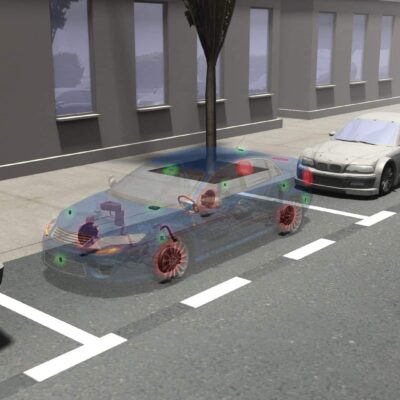The use of surgical robotics has been growing in several different areas of surgery, including pediatric, gynecologic, and cardiothoracic surgery, to name a few [1]. The impact of COVID-19 has been significant on this market, the effects both positive and negative. In the short term, the industry has taken a beating as, for example, weekly procedures performed in the U.S. using Intuitive Surgical robots fell 65% over the course of Q1 2020 as hospitals halted elective and non-essential surgeries from the schedule. However, the impact appears to be temporary as the procedures are not canceled, simply shifted in time.
COVID-19 has also opened up new avenues. The techniques and technology developed for robotic surgery are being applied to address a variety of needs in a medical environment where physical distance is now considered a significant positive. Bright Machines has developed robotic testing of COVID-19 samples to minimize human interaction with the virus. Lifeline Robotics has developed an automated throat swab robot to keep healthcare workers safe. Doctors are beginning to think more about how robotic surgery systems could be used to treat remote patients in areas which have insufficient medical personnel.
So, who are the major players for surgical robotics? Where are there opportunities for patent or other litigation disputes?
North American headquartered companies are the prominent leader with the largest market share, while Canada leads in terms of consumption of the technology. With billions being invested through private and national funding and corporate/university collaborations, new technologies and applications are developed and released annually.
A few major players dominate the current market. The leader is Silicon Valley-based Intuitive Surgical, known for the most popular robotic platform, DaVinci. DaVinci allows surgeons to perform open surgery with minimal invasiveness, increasing the likelihood of better precision and accuracy.
DaVinci first became commercially available after FDA clearance in 2000. With almost 5000 units sold worldwide in 66 countries, over six million surgeries have been conducted using this single system. Each system costs nearly $2 million, raking in a revenue of approximately $700 million annually. While the technology is increasing in popularity, the initial costs have shown to be $3,000 more than traditional methods [2].
Intuitive Surgical also received FDA clearance in 2018 for its new DaVinci X system, which offers urologic procedures through single port surgery—a method that decreases the number of incisions on the body as well as potentially decreasing recovery time, patient discomfort, surgery duration, and health costs.
Another major player in surgical robotics is Stryker. In 2013, Stryker acquired MAKO Surgical Corp. for $1.65 billion, making it the second largest player in the surgical robotics market. Stryker’s technology focuses on partial knee and total hip arthroplasty or replacement.
In 2018, Stryker formed an exclusive partnership with 3D Systems to create Vitual Surgical Planning (VSP), imaging software that accurately plans a surgical procedure. The technology uses anatomical or body landmarks to more accurately map images that are patient-specific.
Challenging the incumbents in the surgical robotics market are heavyweights in both consumer and technology brands. This year, Johnson & Johnson entered the playing field by acquiring Auris Health, a robotic endoscopy company, for $3.4 billion. Alphabet, Google’s parent company, recently entered the game by merging their health data analytic company Verily Life Sciences with Johnson & Johnson’s Ethicon to form Verb Surgical.
With powerful new entrants who have the breadth of resources to create a robust offering, there is a growing race to democratize surgery and create an end-to-end surgical platform where one player can dominate the market. More research is being conducted to support the benefits of robotic use in surgery, which will bolster new players to join the fray to try and capitalize on the emerging innovation.
For instance, recent studies have shown that surgical robotics decrease mortality rates and concurrently the length of hospital stays, compared to open or laparoscopic surgery [3]. Also, in cases of kidney-based surgery, robotics have shown decreased operative time, decreased warm ischemia time (the time to remove iced organs from store to implantation), and reduced blood loss [3].
With increased productivity and health to an expansive number of surgical procedures as a growing reality, surgical robotics has great promise for the future, medically and financially.
Litigation Horizon
Building extensive patent portfolios have long been a hallmark of the medical device industry. The robotic surgery market is no different, with the major players maintaining sizable portfolios. As the industry grows, so does the risk and reality of patent litigation. In 2018, prior to the acquisition by Johnson & Johnson, Auris was sued by Intuitive over eight (8) patents relating to robotic surgery. This fight has spilled over into the PTO and continues to this day in District Court in Delaware, with a potential 2020 trial date (subject to the new normal). This fight and the robotic surgery market itself brings to mind the “stent wars”, when Johnson & Johnson (Cordis), Boston Scientific, and Medtronic waged extensive patent battles over the explosive stent market in the early 2000s. Well-funded, heavily patented competitors fighting over limited market turf is typically a recipe for continued and drawn-out litigation. Another interesting wrinkle is that the initially slow adoption of robotic surgery has led to many of the early foundational robotic surgery patents being expired (such as those from the late 1990s). This should give some openings for new entrants or expansions by the existing players. Finally, as the precision of robotic surgery systems finds uses throughout medicine, we can expect a much broader target base for any portfolio. A COVID-19 vaccine created or manufactured using robotic surgery technologies would create a tempting damages scenario for any patent owner.








